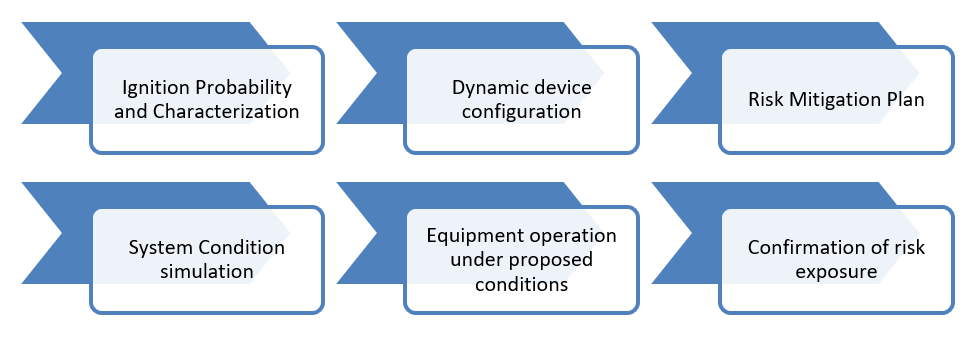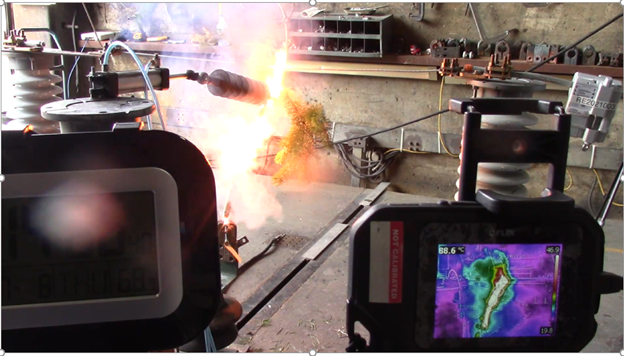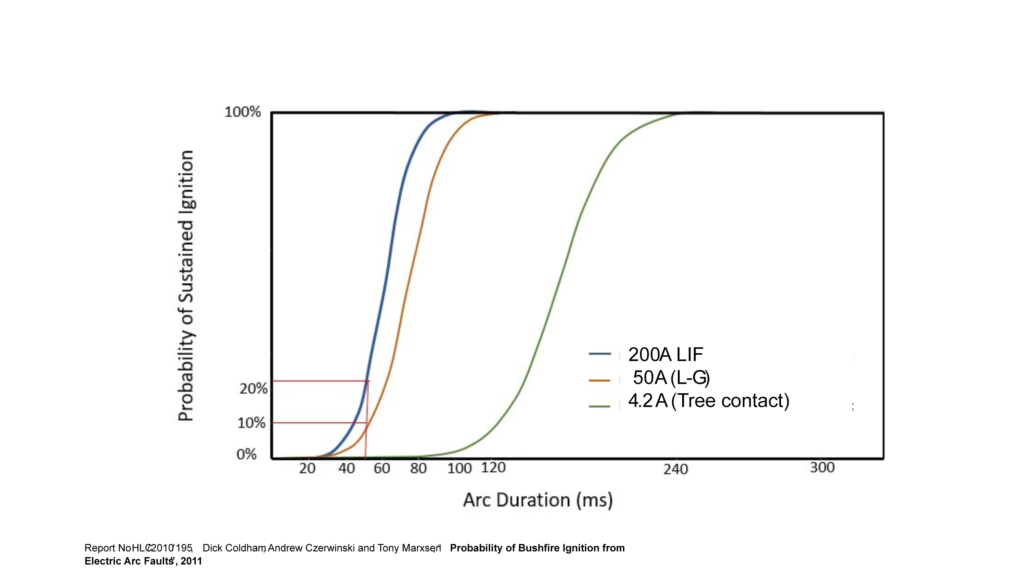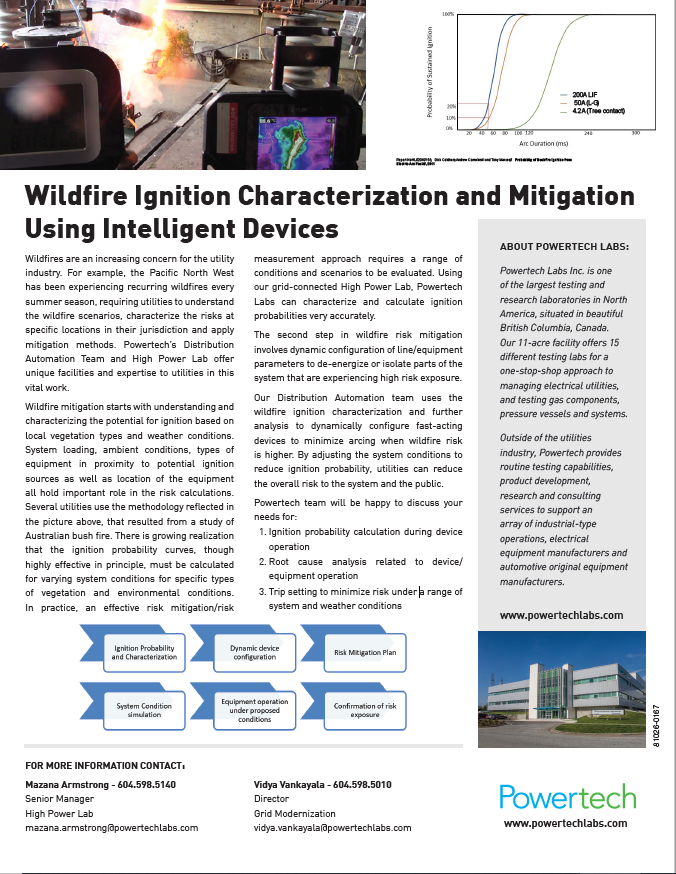Wildfires are an increasing concern for the utility industry. For example, the Pacific North West has been experiencing recurring wildfires every summer season, requiring utilities to understand the wildfire scenarios, characterize the risks at specific locations in their jurisdiction and apply mitigation methods. Powertech’s Distribution Automation Team and High Power Lab offer unique facilities and expertise to utilities in this vital work.
Wildfire mitigation starts with understanding and characterizing the potential for ignition based on local vegetation types and weather conditions. System loading, ambient conditions, types of equipment in proximity to potential ignition sources as well as location of the equipment all hold important role in the risk calculations.
Several utilities use the methodology reflected in the picture above, that resulted from a study of Australian bush fire. There is growing realization that the ignition probability curves, though highly effective in principle, must be calculated for varying system conditions for specific types of vegetation and environmental conditions. In practice, an effective risk mitigation/risk measurement approach requires a range of conditions and scenarios to be evaluated. Using our grid-connected High Power Lab, Powertech Labs can characterize and calculate ignition
probabilities very accurately.
The second step in wildfire risk mitigation involves dynamic configuration of line/equipment parameters to de-energize or isolate parts of the system that are experiencing high risk exposure.
Our Distribution Automation team uses the wildfire ignition characterization and further analysis to dynamically configure fast-acting devices to minimize arcing when wildfire risk is higher. By adjusting the system conditions to reduce ignition probability, utilities can reduce the overall risk to the system and the public.
Powertech team will be happy to discuss your needs for:
- Ignition probability calculation during device operation
- Root cause analysis related to device/equipment operation
- Trip setting to minimize risk under

For more information, contact:
Giuseppe Stanciulescu – 604.598.5011
Business Development Specialist
Business Development
Email→


